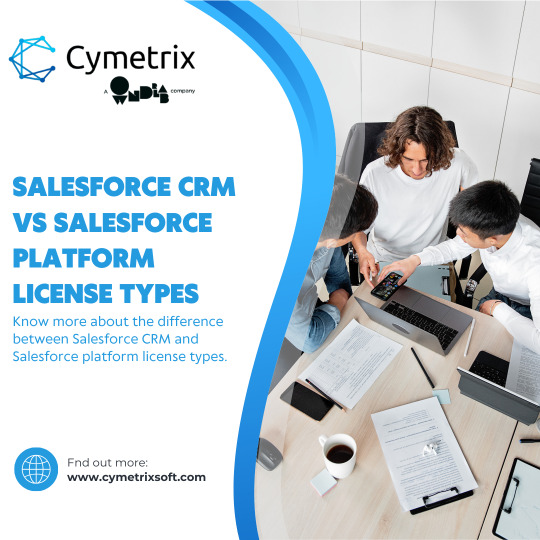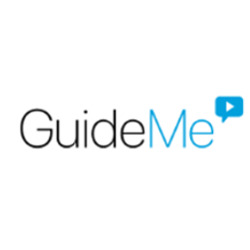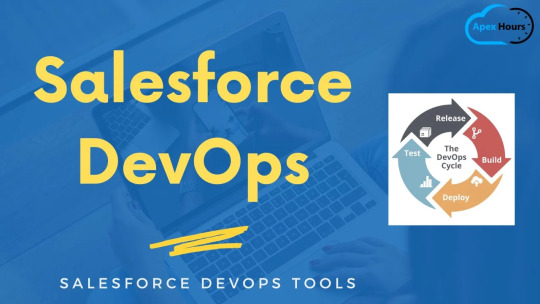#salesforce platform
Explore tagged Tumblr posts
Text
How Data Cloud Salesforce Empowers Predictive Analytics
Introduction In today’s data-driven world, businesses are increasingly turning to predictive analytics to stay ahead of customer trends and behaviors. Predictive analytics allows companies to anticipate customer needs, identify opportunities, and mitigate risks before they arise. One of the most powerful tools in this space is Data Cloud Salesforce. Through its robust data processing and AI capabilities, Salesforce provides businesses with the ability to forecast trends and offer proactive solutions, all while delivering a superior customer experience.
Main Body Data Cloud Salesforce empowers businesses to collect and analyze massive amounts of data from various sources such as social media platforms, website interactions, and transactional histories. By aggregating this data, the Salesforce platform enables companies to gain deep insights into customer behaviors and preferences. For instance, sales teams can use predictive models to identify which leads are most likely to convert, while marketing teams can forecast the success of campaigns based on customer engagement data.
One of the core strengths of Data Cloud Salesforce lies in its AI-driven capabilities. Through Einstein, Salesforce’s AI tool, companies can leverage machine learning algorithms to accurately predict customer behavior. Whether it's predicting when a customer is likely to churn or identifying the best time to send an email offer, Salesforce helps businesses stay one step ahead.
Additionally, Salesforce customers benefit from the platform’s scalability. Whether a company is dealing with thousands or millions of data points, Salesforce’s infrastructure can handle the load while maintaining speed and efficiency. This ensures that even the most complex predictive analytics models can be deployed seamlessly.
Conclusion Data Cloud Salesforce provides businesses with the tools needed to unlock the full potential of predictive analytics. By leveraging AI and big data, companies can anticipate customer needs, improve decision-making, and enhance overall customer experiences. In an increasingly competitive market, Salesforce’s predictive analytics capabilities allow businesses to stay ahead of the curve, delivering personalized, proactive solutions that drive long-term success.
0 notes
Text
Top 5 Customer Identity And Access Management Software Of 2024

You see, CIAM or Customer Identity & Access Management, functions much like the Sorting Hat. It examines an individual's identity against their unique credentials stored in a database, ensuring the person is who they claim to be (no Polyjuice Potion here!) and keeping impostors out of the system.
CIAM Software also categorizes users into their appropriate "house" (access level) based on their roles, preferences, and previous interactions. However, unlike the Sorting Hat, CIAM Software continually monitors user journeys, adjusting permissions as needed to ensure the right people access the right resources at the right times, while keeping out impostors.
So, read on for the top 5 Customer Identity And Access Management Software of 2024!
Customer Identity And Access Management (CIAM) is a security strategy that allows organizations to securely manage their customers’ identities to control their access to applications, portals, and services. CIAM solutions offer a digital security layer in customer interactions, empowering users to secure their identities and data while managing their security preferences.
Customer Identity And Access Management (CIAM) Software simplifies this approach by streamlining the sign-up and log-in process for online applications and services. This helps in protecting data privacy, defending against identity theft and other types of fraud, as well as managing account profiles and security settings. Moreover, the solution helps businesses improve the customer experience while complying with data privacy mandates such as the GDPR.
Last year, we covered the top CIAM solutions of 2023. To find out about this year's top options, read on and explore the top 5 Customer Identity And Access Management Software of 2024!
Top 5 Customer Identity And Access Management (CIAM) Software Of 2024
CIAM Software provides businesses with features such as customer registration, self-service account management, consent and preference management, single sign-on (SSO), multi-factor authentication (MFA), access management, data access governance, identity proofing, identity orchestration, fraud mitigation, and more, to deliver seamless and secure customer experiences. Pretty cool, right?
So, here are the top 5 Customer Identity And Access Management Software of 2024 – in no particular order!
Tool 1: WSO2 Identity Server
Founded in August 2005 and headquartered in Mountain View, California, United States, WSO2 began as an open-source middleware company and now offers suites for application development, SaaS, and IAM solutions. With over 900 employees, serving major clients such as Nutanix, Jaguar, Vodafone, Honda, and Cisco, WSO2 has secured over 1 billion identities. The company has also won several awards, including being named a Customers’ Choice in the Gartner Peer Insights Voice of the Customer report in 2023. Pretty cool, WSO2!
WSO2 Identity Server, new to our list, excels in customer identity and access management with its open-source platform that helps secure applications for individuals, enterprise customers, citizens, and more. It offers robust features such as single sign-on (SSO), multifactor authentication (MFA), and identity federation to ensure seamless, secure, and streamlined user experiences. The platform also offers scalable features for passwordless logins, data privacy compliance, enterprise SSO, role-based access management, and contextual authentication.
Moreover, WSO2 Identity Server provides a wide range of APIs and SDKs to help businesses develop custom deployments that easily integrate with existing systems. This solution is compatible with cloud-based IDaaS, on-premises, or private cloud and comes in three variants – B2B, B2C, and G2C – enabling secure identity and access management for diverse customer sets. WSO2 can easily help organizations optimize customer data security, leading to more engaging experiences!
Tool 2: IBM Security Verify
Who hasn’t heard of IBM? Founded in 1911 and headquartered in Armonk, New York, United States, IBM employs roughly 300,000 people globally, serving major clients such as Apple, NASA, Ford, and Cisco. IBM has received numerous industry accolades, including winning 16 awards from Comparably in 2023, ranging from Best Company for Diversity to Happiest Employees. Impressive, IBM!
IBM Security Verify, making its debut on our list, is notable for its advanced security and AI-driven features for customer identity and access management. The CIAM solution offers adaptive authentication, identity analytics, and risk-based access control to ensure customer data is always protected. Moreover, IBM Security Verify creates a consistent, frictionless authentication experience across all business applications, ensuring customers have a smooth experience at every touchpoint.
With robust integration capabilities that support diverse environments, spanning cloud, on-premises, and hybrid infrastructures, IBM Security Verify helps build an enterprise-wide identity fabric that eliminates identity silos. Further, AI-driven analytics provide real-time threat detection based on users’ behaviors and biometrics to help protect from identity-based attacks such as Account Takeover (ATO). IBM Security Verify also enhances the overall security posture, offers a user-friendly interface, and comprehensive reporting tools to efficiently manage and monitor access policies.
Tool 3: Frontegg
Frontegg, an end-to-end user management solutions provider, was founded in 2019. With a modest team of fewer than 100 employees and headquarters in Tel Aviv, Israel, Frontegg serves clients such as Talon, Siemens, Cider, and Vial. It has received several recognitions, including winning the Best Software Award for Security Products category by G2 in 2023. Always at the front, Frontegg!
Frontegg, making its second consecutive appearance on our list, distinguishes itself in the CIAM space with a developer-centric platform featuring comprehensive user management capabilities. Besides seamless integration and rapid deployment, Frontegg offers extensive features such as social login, SSO, MFA, APIs, and open-source SDKs, providing businesses with everything they need to ensure a secure and frictionless user experience.
Frontegg’s user-friendly interface enables developers to quickly customize and integrate identity and access management features into their applications. Its modular architecture allows businesses to tailor, modify, and scale their CIAM capabilities as needed. With real-time monitoring and analytics, Frontegg provides actionable insights for authentication, authorization, security management, and observability, leading to comprehensive IAM coverage. No wonder Frontegg is a popular choice for organizations looking to enhance their customer data management!
Tool 4: Salesforce Platform
Salesforce, a leading cloud software company, was founded in 1999 and is headquartered in San Francisco, California, United States. Employing roughly 80,000 people globally, Salesforce serves major brands such as Amazon, Adidas, Coca-Cola, Walmart Inc., and more. The company has won several accolades, being ranked as the #1 CRM provider by IDC in the 2024 Worldwide Semiannual Software Tracker for the 11th consecutive time. How cool is that!
Salesforce Platform, new to our list, boasts CIAM capabilities integrated into its popular CRM ecosystem, offering a seamless and secure user experience. Key CIAM features include single sign-on, MFA, identity federation, and user lifecycle management, ensuring comprehensive management of user identity and access. Its integration with Salesforce CRM provides a unified view of customer data, access levels, roles, and more, enhancing context-based security capabilities.
The scalable architecture supports large-scale deployments, securing identities for employees, partners, and customers from a unified solution. Its intuitive user interface simplifies managing access policies and integrating third-party applications. Additionally, Salesforce’s advanced analytics and reporting tools provide deep insights into user behavior across the ecosystem, helping organizations optimize their identity management and security strategies.
Tool 5: Okta Customer Identity
Founded in 2009 and headquartered in San Francisco, California, United States, Okta employs over 5,800 people, serving clients such as Apple, Mitsubishi Heavy Industries, MGM Resorts International, and Albertsons. Okta has won several awards and recognitions, most recently being named the Google Cloud Technology Partner of the Year for Productivity and Collaboration in 2024. That’s pretty sweet, Okta!
Okta Customer Identity, making its first appearance on our list, offers extensive cloud-based CIAM features such as SSO, MFA, adaptive authentication, and user security management. Its cloud-native architecture ensures high availability and scalability, supporting millions of customer interactions seamlessly. Okta Customer Identity’s advanced security features, such as threat detection and response, Okta AI, progressive profiling, adaptive MFA, and more, provide robust protection against identity-related threats.
The platform’s intuitive interface and comprehensive APIs simplify third-party integrations and the management of identity services across various applications and ecosystems. Okta Customer Identity also enhances compliance with regulatory requirements and personal data protection laws to ensure customer information remains secure. With its powerful features, Okta Customer Identity can help organizations enhance customer security and user experiences!
Conclusion
There you have it, folks!
Choosing an ideal Customer Identity and Access Management Software is crucial for safeguarding customer data, complying with data security regulations, and enhancing the end-user experience. With the best Customer Identity And Access Software, you can streamline identity management, eliminate identity theft, secure user actions, boost customer loyalty, and foster higher trust in your brand.
However, remember that every business has unique customer management requirements. Make sure you choose a tool that addresses your unique needs. Happy CIAM-ing!
0 notes
Text
#salesforce#salesforce platform#salesforce platform development#salesforce platform developers#hire salesforce platform developers
0 notes
Text
Salesforce CRM vs Salesforce platform license types

Salesforce CRM and Salesforce Platform are two types of user licenses that determine the access to Salesforce products and features. Salesforce CRM licenses are for users who need core CRM functionalities, such as Sales Cloud, Service Cloud, or both. Salesforce Platform licenses are for users who need access to accounts, contacts, custom objects, and automation tools, but not the CRM objects. If you want to know more, don't forget to read about the Types of Salesforce user licenses.
#salesforce licenses#salesforce crm#salesforce platform#crm licenses#salesforce licenses types#types of salesforce licenses#salesforce license#salesforce platform license#cymetrix salesforce#cymetrix#crm#types of salesforce user licenses#salesforce user license
0 notes
Photo

Are you looking to enhance your sales process and drive more revenue? Look no further than Salesforce Digital Engagement. Our powerful platform empowers your sales team to connect with customers and prospects like never before, revolutionizing the way you engage and close deals. https://qrsolutions.com.au/the-overview-of-salesforce-digital-engagement/
0 notes
Link
Learn about 6 powerful Salesforce products and how they help you boost your productivity and delight customers.
Salesforce is the most widely used CRM platform; a study conducted by International Data Corporation (IDC) reveals the popular IT system is used by almost 22.9% of the world's companies, including several Fortune 500 companies. Salesforce comes with a wide variety of useful features and is very simple to use; this makes it the preferred choice of firms across the world. According to a study commissioned by Salesforce, the CRM system empowers organizations to reduce the time taken to make decisions by approximately 38%, increase their revenues by at least 25% and improve customer satisfaction levels by nearly 35%.
#salesfoce#salesforce products#salesforce partner#salesforce platform#salesforce integration consultant#salesforce implementation services
0 notes
Text
Why Choose a Salesforce Cloud Data Platform or AWS Course Online
You’re interested in customer data management through a Salesforce Cloud Data Platform Course or want to harness the power of cloud computing with an AWS Course Online, these training programs offer practical and industry-relevant skills. Investing in these courses can open doors to exciting career opportunities in the ever-evolving tech landscape.
2 notes
·
View notes
Text

Expert WalkMe Implementation Services for Seamless Digital Adoption
Looking for WalkMe implementation services? Our team can help you implement WalkMe seamlessly and efficiently to enhance your digital adoption process! Visit: https://www.guidemesolutions.com/
#walkme customer stories#walkme solutions#walkme change management#WalkMe Training#digital adoption platforms#walkme digital adoption platform#walkme#walkme digital adoption#digital adoption platform salesforce#digital adoption tools#best digital adoption platform
0 notes
Text

Learn to Turn Your Side Hustle into an Automated Sales System . . Require Assistance? Reach Out to our Business Establishment to Acquire Digital System Setup Services! . . In addition, download ♦️FOR FREE♦️ our Digital Presentation Guide Which You Can Access at any Time. . . Along with Additional Resources and Information! Visit Link for Details. https://campsite.to/microburstmedia . . This Info📚 Was brought to You by Micro Burst Media🏬 a Digital Solutions Company📊 . . Specializing In Digital Marketing, Content Advertisement and AI Automation System Setup Services . . Bringing you powerful media solutions for your business!
#saashow#sidehustleforbeginners2024#communityengagement#communitynews#generalpublicnews#floridanews#pompanobeachnews#sidehustleideasforanyone#microburstmedia#browardcountynews#saas technology#software#saas platform#saas development company#b2b saas#salesforce#software development#information technology#it services
0 notes
Text
Streamlining Development with DevOps Salesforce

DevOps Salesforce is a powerful approach that blends the best practices of DevOps with Salesforce development, enabling businesses to achieve faster, more reliable deployments. By integrating DevOps principles with Salesforce, organizations can optimize development workflows, reduce manual errors, and deliver high-quality applications at a faster pace.
Salesforce's inherent flexibility makes it a top choice for businesses looking to customize solutions for their unique needs. However, managing its development lifecycle can be complex. This is where DevOps Salesforce tools and methodologies come into play. They facilitate version control, automated testing, and continuous integration/continuous deployment (CI/CD) pipelines. This ensures that changes are deployed smoothly while minimizing disruptions to production environments.
Key tools in the DevOps Salesforce ecosystem, such as Copado, Gearset, and AutoRABIT, simplify tasks like metadata management, automated backups, and deployment tracking. These tools empower teams to work collaboratively, even in multi-developer environments, by providing visibility and control over changes in real-time.
Adopting DevOps Salesforce also enhances agility, a critical factor for businesses operating in dynamic markets. With shorter development cycles and automated testing, teams can respond quickly to user feedback and roll out updates with minimal downtime. This is especially beneficial for companies relying on Salesforce as their CRM platform to maintain seamless customer experiences.
In conclusion, DevOps Salesforce bridges the gap between development and operations teams, creating a cohesive environment for delivering scalable, reliable solutions. Whether you are scaling your Salesforce applications or streamlining workflows, embracing DevOps Salesforce methodologies is a smart move for sustained growth and innovation.By implementing DevOps Salesforce best practices, companies can unlock the full potential of their Salesforce ecosystem, ensuring competitive advantage and operational efficiency in today’s fast-paced digital landscape.
0 notes
Text

𝐓𝐡𝐞 𝐔𝐥𝐭𝐢𝐦𝐚𝐭𝐞 𝐃𝐞𝐬𝐢𝐠𝐧 𝐏𝐥𝐚𝐭𝐟𝐨𝐫𝐦 𝐟𝐨𝐫 𝐀𝐥𝐥 𝐘𝐨𝐮𝐫 𝐍𝐞𝐞𝐝𝐬 🖌️ Why should we juggle a bunch of tools when we can have everything in one place? With VistaCreate, we can create stunning visuals for any project without the hassle. Whether it’s designing social media posts, editing videos, or adding animations, VistaCreate gives us all the features we need to bring our ideas to life—all in one easy-to-use platform. 💻🎬 🌟 Why choose VistaCreate? ✔ All-in-One Platform: Design graphics, videos, animations, and more. ✔ Easy-to-use Interface: Perfect for beginners and pros alike. ✔ Massive Asset Library: Access millions of photos, videos, and music. 📍 Ready to experience the future of design? Then VistaCreate is waiting for you!
#VistaCreate #SaaSZest #AllInOneDesign #ContentCreation #GraphicsAndVideo #AffordableDesign
0 notes
Text
Platform Developer I Certification Maintenance Winter 25
For the Platform Developer I Certification Maintenance (Winter ’25), you have a requirement to use the iterables Here we are requested to Create a Class named “MyIterable” and we also need to create a Test class “MyIterableTest” As part of the “MyIterable” class we need to do following things: Create a Constructor that is accepting the List<String> type of data Create a method that has return…
#ai#AI Agent#chatbot#PD1#Platform Developer I Certification Maintenance (Winter &039;24)#programming#Salesforce - winter 24#Salesforce - winter 25#software-development#Winter 24#Winter 25
0 notes
Text
#salesforce#salesforce cloud#CRM#CRM platform#customer service#Features of Salesforce#manage customer interactions#Service Cloud#Marketing Cloud#Commerce Cloud#Einstein AI#Analytics Cloud#Community Cloud#Mobile App#Operational Efficiency#Scalability#Security
0 notes
Text
Discover how Salesforce transforms the lending industry with streamlined workflows, Mortgage CRM software for lenders, and seamless customer experiences. Learn how Salesforce for lending solutions enhances efficiency, compliance, and borrower satisfaction.
#salesforce for lending Solutions#salesforce lending platform#Mortgage CRM Software for Lenders#seamless lending experiences#salesforce admin loan#salesforce in lending industry
0 notes
Text
Salesforce Agentforce Platform - Sell Smarter, faster and better
0 notes
Text
Agile Technologies: Transforming Business Innovation and Efficiency with Salesforce
In today's fast-paced business environment, companies must be agile to remain competitive. One way to achieve this agility is through the adoption of agile technologies. Salesforce is a leading provider of agile technologies that help transform business innovation and efficiency.
What are Agile Technologies?
Agile technologies refer to software development methodologies that prioritize collaboration, flexibility, and iterative development. Unlike traditional development approaches that involve lengthy planning phases and rigid processes, agile methodologies allow for continuous feedback and improvement. The result is faster development, improved quality, and more satisfied customers.
How Salesforce's Agile Technologies Help Your Business
Salesforce's agile technologies are built around the Salesforce platform, a cloud-based customer relationship management (CRM) solution. The platform includes a range of tools and features that help businesses transform their operations and achieve their goals.
Improved Collaboration
One of the key benefits of Salesforce's agile technologies is improved collaboration. Teams can work together seamlessly, sharing data and insights in real-time. This means that decision-making can be faster and more effective, which is essential in today's fast-moving business environment.
Increased Flexibility
Another benefit of Salesforce's agile technologies is increased flexibility. Businesses can quickly adapt to changing market conditions and customer needs, making it easier to stay ahead of the competition. With Salesforce, businesses can easily add new features or functionality to their applications without the need for lengthy development cycles.
Iterative Development
Salesforce's agile technologies also enable iterative development. This means that teams can quickly create and test new ideas, refining them as they go. This approach is particularly useful for businesses that need to innovate quickly to keep up with changing customer demands.
Improved Efficiency
Perhaps one of the most significant benefits of Salesforce's agile technologies is improved efficiency. By streamlining processes and automating tasks, businesses can save time and reduce costs. Salesforce's platform includes a range of automation tools that can help businesses automate everything from sales and marketing to customer support and service.
Conclusion
Overall, Salesforce's agile technologies are helping businesses transform their operations and achieve their goals. By improving collaboration, flexibility, and efficiency, these technologies are enabling businesses to innovate faster and stay ahead of the competition. Whether you're a small startup or a large enterprise, Salesforce's agile technologies can help you transform your business and achieve success in today's fast-paced business environment.
If you're interested in learning more about how Salesforce's agile technologies can benefit your business, contact us today. Our team of experts can help you get started and guide you through the process of implementing these technologies for your business.
0 notes